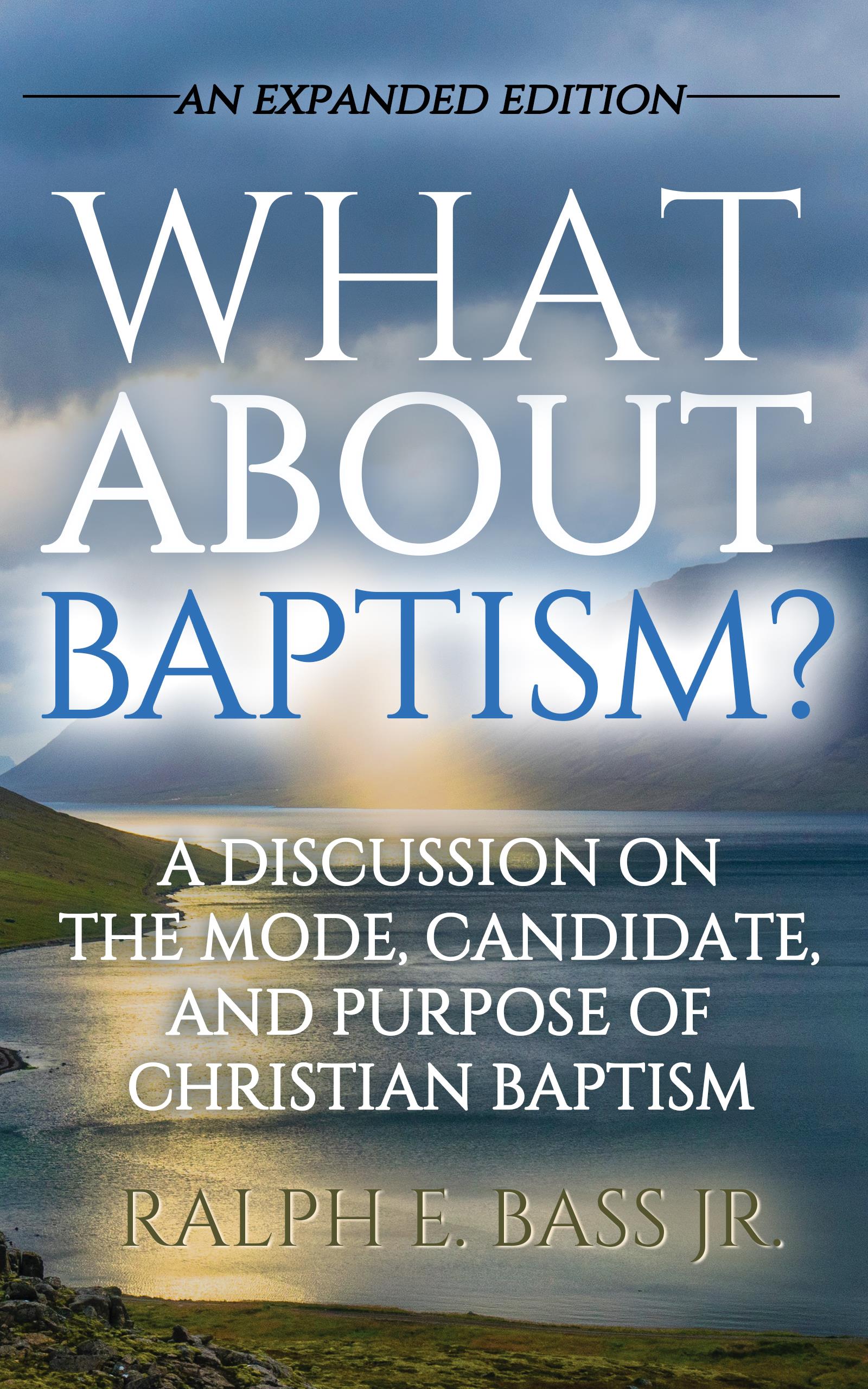
Hi, My Name Is Ralph Bass...This Is My Library


Subscribe to this Site
Signs of the Covenant
The Covenant of Redemption -- The covenant of redemption or grace is rooted in eternity. All other covenants are an outworking of this one.
The Adamic Covenant – The covenant of commencement.
The Noahic Covenant – The covenant of preservation.
The Abrahamic Covenant – The covenant of promise.
The Mosaic Covenant – The covenant of law.
The Davidic Covenant – The covenant of the kingdom.
The New Covenant – The covenant of consummation.
Through both time and eternity, God works in covenant with His people.
3) New Covenant Theology - A covenant will have a rite of initiation and a rite of ongoing fellowship. The predominant rite of initiation in the Old Testament community of believers was circumcision. Without it, community membership was not allowed; that person was cut off from his people.
The Old Testament rite of fellowship was Passover. In the New
Let's Look Inside
the Book


1) New Covenant Theology - Baptism is the New Testament counterpart to Old Testament circumcision. Baptism takes the place of circumcision. What was true of circumcision in the Old Testament is, in many cases, true of baptism in the New Testament. They are the same rite: one for the old covenant, the other for the new covenant.
We are talking about covenants; so, what is a covenant? "A covenant is a bond in blood sovereignly administered." This means that a covenant binds two parties together to do something. This binding is sealed with the shedding of blood. The guarantee of its fulfillment is in the hands of the sovereign party to the agreement. Each of God’s covenants is an unfolding and enriching of the promises of the one before it. A new covenant never diminishes the privileges of those who were beneficiaries of a preceding covenant.
2) New Covenant Theology - The covenants are:
Testament we recognize that the Lord’s Supper has replaced Passover as the rite of continued fellowship.
4) New Covenant Theology - But, what about the rite of initiation; is there no rite of initiation in the New Testament, a rite by which we enter the Church? Of course there is; it is baptism. Notice the correspondence then: the Lord’s Supper corresponds to Passover, and baptism corresponds to circumcision. One replaces the other. That is exactly the way the early church viewed these sacraments, as the New Testament counterparts to the Old Testament practices. Baptism “…took the place of circumcision as a sign and seal of church membership. It is the outward mark of Christian discipleship, the rite of initiation into the covenant of grace. It is the sacrament of repentance (conversion), of remission of sins, and of regeneration by the power of the Holy Spirit."[1]
However, the simple recognition of this fact utterly destroys dipping of “believing adults only” as the sole proper candidate for baptism. For this reason, those who practice dipping of believing adults only rarely, sometimes never, mention the covenants. And yet salvation is always through covenant. “It is clear then that, from the first, baptism in the name of Jesus functioned as the rite of entry or initiation into the new sect of those who called upon the name of Jesus….”[2]
“…to think organically of the Scripture revelation is much more difficult than to think atomistically. The argument for infant baptism rests upon the recognition that God's redemptive action and revelation in this world are covenantal. In a word, redemptive action is covenant action and redemptive revelation is covenant revelation. Embedded in this covenantal action of God is the principle that the infant seed of believers are embraced with their parents in the covenant relation and provision. It is this method of God's administration of grace in the world that must be appreciated. It belongs to the New Testament as well as to the Old. It is its presence and significance that grounds infant baptism. And it is the perception of its significance that illumines for us the meaning of this ordinance.”[3]
5) New Covenant Theology - New Testament baptism is the counterpart to Old Testament circumcision. The candidate for the one is candidate for the other. Believers and their children were the proper candidates for Old Testament circumcision. They continue to be the proper candidates for New Testament baptism.
-----------------------------------------------------------------
[1] Schaff, Philip, History of the Christian Church, 1997, [Online] Available: Logos Library System, Vol. 1, Chapter 9, Section 54.
[2] The New Bible Dictionary, (Wheaton, Illinois: Tyndale House Publishers, Inc.) 1962, [Online] Available: Logos Library System, Baptism.
[3] Murray, John, Christian Baptism, Presbyterian and Reformed Publishing Co., 1980, pg. Ii.Testament we recognize that the Lord’s Supper has replaced Passover as the rite of continued fellowship.
4) New Covenant Theology - But, what about the rite of initiation; is there no rite of initiation in the New Testament, a rite by which we enter the Church? Of course there is; it is baptism. Notice the correspondence then: the Lord’s Supper corresponds to Passover, and baptism corresponds to circumcision. One replaces the other. That is exactly the way the early church viewed these sacraments, as the New Testament counterparts to the Old Testament practices. Baptism “…took the place of circumcision as a sign and seal of church membership. It is the outward mark of Christian discipleship, the rite of initiation into the covenant of grace. It is the sacrament of repentance (conversion), of remission of sins, and of regeneration by the power of the Holy Spirit."[1]
However, the simple recognition of this fact utterly destroys dipping of “believing adults only” as the sole proper candidate for baptism. For this reason, those who practice dipping of believing adults only rarely, sometimes never, mention the covenants. And yet salvation is always through covenant. “It is clear then that, from the first, baptism in the name of Jesus functioned as the rite of entry or initiation into the new sect of those who called upon the name of Jesus….”[2]
“…to think organically of the Scripture revelation is much more difficult than to think atomistically. The argument for infant baptism rests upon the recognition that God's redemptive action and revelation in this world are covenantal. In a word, redemptive action is covenant action and redemptive revelation is covenant revelation. Embedded in this covenantal action of God is the principle that the infant seed of believers are embraced with their parents in the covenant relation and provision. It is this method of God's administration of grace in the world that must be appreciated. It belongs to the New Testament as well as to the Old. It is its presence and significance that grounds infant baptism. And it is the perception of its significance that illumines for us the meaning of this ordinance.”[3]
5) New Covenant Theology - New Testament baptism is the counterpart to Old Testament circumcision. The candidate for the one is candidate for the other. Believers and their children were the proper candidates for Old Testament circumcision. They continue to be the proper candidates for New Testament baptism.
-----------------------------------------------------------------
[1] Schaff, Philip, History of the Christian Church, 1997, [Online] Available: Logos Library System, Vol. 1, Chapter 9, Section 54.
[2] The New Bible Dictionary, (Wheaton, Illinois: Tyndale House Publishers, Inc.) 1962, [Online] Available: Logos Library System, Baptism.
[3] Murray, John, Christian Baptism, Presbyterian and Reformed Publishing Co., 1980, pg. Ii.Testament we recognize that the Lord’s Supper has replaced Passover as the rite of continued fellowship.
















































































































